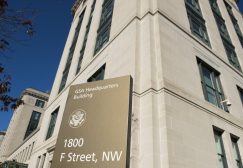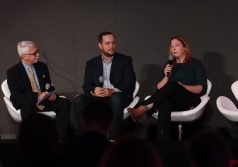Agencies need technology that adds value to their organizations, officials say
Lowering the cost of government isn’t just about slashing budgets — it’s also finding more efficient ways for an agency to accomplish its goals, said speakers at a major federal IT conference Thursday in Washington, D.C.
Indeed, Col. Bobby Saxon, Army division chief and program director of G-3/5/7, encouraged attendees of FedScoop’s 7th Annual Lowering the Cost of Government with IT Summit to uncover how technology could best support their organizations’ missions.
“If we always do that — always staying focused on how we’re bringing value to our stakeholders — we’ll be successful,” he said.
Across government, agencies feel major pressure to do more with less. While federal IT budgets overall have enjoyed modest growth in the past five years, according to a recent survey from Professional Services Council and Grant Thornton LLP, many agencies still feel the sting of the 2013 sequestration. Even now, cutting government waste remains a popular rallying cry among lawmakers.
“Everywhere I go in government, everyone only talks about the waste side,” said EPA Chief Technology Officer Greg Godbout. But, he added, “you don’t minimize your cost when you’re providing value that’s measurable.”
During Godbout’s presentation, the former executive director of the much-lauded 18F discussed plans to launch a similar digital services effort in his new agency. Federal agencies, Godbout said, need to act as system integrators to ensure they’re building leaner, more agile products that are geared to what users want.
The Obama administration has placed a premium on digital services efforts like the one Godbout described. In its fiscal year 2016 budget request, the White House called for $105 million to support these offices governmentwide.
At the event, other speakers pointed to digital services as a way to make agencies more efficient and better serve the public. Attendees heard from founding member the U.S. Digital Service Eric Hysen, who gave an overview of the development of his burgeoning agency, and Denise Turner Roth, the administrator of GSA, who touted her agency’s efforts to set up digital services offices across government.
Roth also talked about finding ways to make strides in innovation more permanent.
“Perhaps the most important lesson learned is it’s not enough to introduce agility and cutting-edge technology,” Roth said. She added, “We need to institutionalize innovation so as administrations come and go, the successes we achieve are woven into the fabric of government operations and policy.”

“There’s always more to do and ways to do it better,” said Denise Turner Roth, the administrator of GSA. (FedScoop)
Cloud and other potential cost savers
Speakers also showcased how specific tools could help agencies save money long term. During a panel discussion, Matt Goodrich, director of the Federal Risk and Authorization Management Program, said moving to cloud often saves organizations money up front. But even if it doesn’t, the ability to automate provides long-term value.
“It’s annoying when I hear people say, ‘I don’t know where I’m going to find the money to move to the cloud,’ because if you actually do the analysis, it’s something you should be planning for anyway,” he said.
He added, “If you look at cloud … a lot of the value is in the time” it can save.

Dux Sy, CTO of AvePoint, with Michael Valivullah, chief technology officer of Agriculture Department’s National Agricultural Statistics Service. (FedScoop)
Michael Valivullah, chief technology officer of Agriculture Department’s National Agricultural Statistics Service, agreed, adding, “Cloud provides the agility and quick turnaround that you would never see in another environment.”
Meanwhile, Scott Gaydos, chief technologist, U.S. public sector at Hewlett-Packard, encouraged attendees to embrace the shadow IT in their organizations. Shadow IT — that is, when people use apps or software that isn’t necessarily approved by their organizations — can provide flexibility to companies in ways that can help tamp down costs, he said. (Editor’s note: Read his commentary on the subject.)
Another panel touted the benefits of data to make the government more efficient. Peter Pin, the regional vice president for civilian agencies with Verizon Enterprise Solutions, also called on contractors to change the way they sold services to government, and Chris Neff, the chief marketing officer for NIC, pitched the potential for agencies to build no-cost, interactive websites, relying on modest transaction fees.
Protecting coffers and digital systems
In the wake of the massive breach of the Office of Personnel Management’s systems, cybersecurity loomed large at the summit.
“We have to look at it as integral for every signal thing we do,” said Wolf Tombe, chief technology officer at Customs and Border Protection. “It’s not an add-on, it’s not a package you buy, it’s not a firewall sitting at your perimeter.”

Rob Potter, vice president of public sector and health care for Symantec (FedScoop)
Rob Potter, vice president of public sector and health care for Symantec, said it was critical for agencies to invest in robust cybersecurity systems.
“If we do not address the cyber risk that’s out there … the cost after the fact won’t just be financial,” he said.
He also talked about another recent hack that he said, for many cybersecurity professionals, may be the most puzzling yet: the breach of Ashley Madison, an extramarital affairs dating site.
“I’ll tell you what scared me about the Ashley Madison breach — nothing’s happened,” he said. “Think about the value of that information — who you can blackmail.”
Looking ahead, U.S. CIO Tony Scott said IT has already saved the government money, and he urged agencies to reinvest that savings into things like critical infrastructure. Overall, he said that federal IT is on a good trajectory, but the public and private sector must work harder to see real gains.
“The possibilities are endless if we get it right,” he said.
Wyatt Kash, Alex Koma, Corinne Lestch, Billy Mitchell, Greg Otto and Jake Williams contributed to this story.






